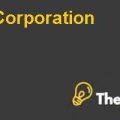
JetBlue Airways: Managing Growth
Introduction
The report presents a case about JetBlue Airways, which is a Low Cost Carrier (LCC) airlines. It entered the market in 2000 and has achieved tremendous success in short tenure. The airline adopts a mix of low cost and differentiation strategy which enables the organization to achieve market share and provide an opportunity to enjoy competitive edge. Later on, the organization faces operational challenges due to the increased fuel prices which has slowed its growth significantly.
Background
JetBlue was founded by David Neeleman in 1999. David Neeleman has previously served as executive vice president in Morris Air but later on, he planned to make a ‘growth airline company’ so he entered into the market with just 10 airplanes in 2000. Initially the organization started to serve in warmer cities in Southeast areas but later on the company enjoyed tremendous success and started to serve in metropolitan cities as well.
David Neeleman has a long-term vision of achieving incredible success and to create the value for his shareholders. In order to achieve this long-term vision, JetBlue adopted a mix of cost and differentiation strategy which ultimately increased the customer base of the organization and allowed them to report profits for consecutive first five years.
JetBlue was thoroughly compared with Southwest Airways due to its low fare; JetBlue suceeded to offer reduced price to their customers. This was because the organization’s fleet comprised of A320 planes only, by using this single aircraft, JetBlue was able to standardize its training and service processing. Further, the company only stores spare parts for single model of plane which reduces the inventory storage cost and increases the liquidity position of the company. In addition to this, the company was offering tremendous service to its customers; the interior design of the aircrafts was excellent, including the service of the workforce that was really amazing which attracted the new and existing customers. Additionally, the prices offered by the company were significantly lower than other players in the market.
Another key operating principal for JetBlue was that they tried to avoid flight cancellation at any cost and the flight’s departure and arrival were always on time. Additionally, they offered services to wide destinations which really attracted the commercial customers. Further, JetBlue offered approximately 65% lower prices than other legacy competitors which indicated that the airline was operating under the value for money for its customers.
Later on, there was a great market to serve customers in different geographical locations, so Neeleman considered the new market as a source of strategic growth. He believed that the largest growth opportunity existed in connecting the large cities already served by JetBlue to medium-sized cities that were currently served by other regional jets, so the organization took the decision to launch E190 in its fleet. The E190 planes were really attractive in feature, design and were also fuel efficient which enabled the company to offer reduced price to its passengers.
Later on, the company served tremendous downturn due to operating crises and significant rise in fuel price Hence, the management decided to slow down the growth of its fleet. The economic downturn resulted for the organization to cancel over 1,100 flights which adversely affected over 131,000 customers during that period.
Problem statement
The management of JetBlue Airways was concerned about the rising fuel prices, which had a significant impact on the operations of the airlines and which also rasied the need to slow its growth rate. The report contains a detailed analysis regarding the operating performance of JetBlue prior to 2005 and the impact of other operational crises which raised the need to slow down its potential growth.
Majority of the areas discussed in the report are as follows:
- JetBlue operational strategy
- Major key drivers for both types of planes
- JetBlue’s decision to add E190 to its fleet
- Slow down the growth of its fleet
JetBlue operational strategy
JetBlue started its journey in 2000 and had achieved tremendous growth in short tenure because it operated under a low-cost carrier (LCC) model where the fares offered by the company were comparatively low than other players in the market. The operational strategy of the airlines was to attract the domestic and commercial customers through providing them discounted price for the national and international flights and to provide them craft equipped with latest technology. The low-cost strategy was adopted through productive workforce, automated processes and heavy reliance on technology which enabled them to reduce their cost significantly and to enjoy a competitive edge. Further, in order to attract their passengers, they hired professional employees to provide incredible service to their customers and to maintain strong relation with them. Such employees were provided regular training............................
This is just a sample partial case solution. Please place the order on the website to order your own originally done case solution.
Considers the situation David Barger, president and CEO of JetBlue Airways, in May 2007, he refers to the need for airlines to slow the rate of growth in response to higher fuel prices and the impact of the crisis on the key operational flights in February 2007. In 2005, JetBlue, is generally regarded as low-cost carrier (LCC)-a step that is often considered to contradict the model LCC. Specifically, JetBlue moved from one type of aircraft (eg, Airbus 320, or A320), the fleet with two types of aircraft, adding smaller Embraer 190 or E190. Students are initially asked to consider the impact of this decision on the operations of JetBlue strategy and business model. Then they were asked to consider how to reduce the growth potential of the aircraft to be distributed on two types of plane. This discussion is dependent not only on issues of aircraft performance, but also on those of operational focus and ultimate competitive priorities of the airline in general. "Hide
by Robert S. Huckman, Gary P. Pisano Source: Harvard Business School 24 pages. Publication Date: October 10, 2008. Prod. #: 609046-PDF-ENG












